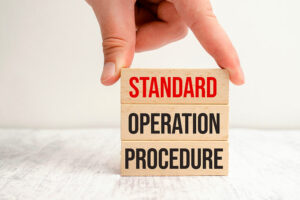The infamous glass ceiling. I am pretty sure most MSPs have heard of it – or worse felt it. The 2 ceilings we hear about are the $2m ceiling and the $4m ceiling. I only came across this glass ceiling in the last few years when speaking to MSPs, yet I have had my MSP since 2000. When I had first heard of it, I was quite confused as to why MSPs talked about it, getting past it was like winning a prize. It was only after speaking to many MSPs about the way they did what they did and a few years of digging to really understand what made this glass ceiling – and why so many were affected by it.
The great news is that these ceilings are glass – so we can definitely smash through them, but what makes these ceilings and more importantly how can we get past them?
What Causes the Glass Ceiling?
The ceiling is a result, not a cause, just as the profitability of a business is a result. As a business, if you want different results than what you are seeing you’re going to have to take different actions. What I found interesting was that the word ‘culture’ gets thrown around in these discussions, and it was this that started my thinking. What is the relation between the way that different MSPs define their culture and their size? Does it have anything to do with the ceiling?
What we found is that the smaller MSPs struggle to get past the $2m ceiling not because its $2m. The reason is that as a business they need to do things differently, they need to be more structured and put in the processes to make this happen. The unfortunate thing is that many MSPs have been started by a tech themselves, and a lot of the time they don’t have the business knowledge to take their MSP to the next level. This has a compound effect. They are not profitable enough to be able to afford to bring a business manager into the business to help them make the change, and if that’s not hard enough, the last compounding point is that they, the business owner, are not ready for the change. They cannot expect this change to happen without them, and they need to do what is required to make the change.
I have spoken to many business owners that are under that $2m ceiling – that will never go past it, due to themselves. They cannot expect their team to do something one way if they don’t do it themselves. This is the single most common reason the $2m ceiling will continue to keep them trapped. They need to embrace structure and process to be able to not only get past the $2m ceiling but also to enjoy higher profit margins.
How to Break the Glass Ceiling
So what do MSPs that are trying to break the $2m ceiling and $4m ceiling look like – and how do they compare with those that didn’t see the ceiling to start with? Here is a table we put together, and for those that have read any of my blogs or heard me at an event or in a podcast – you will see a reference to restaurants. But this time it’s not fast food. After reviewing the table, can you see where you are and how others do things differently? Have you experienced being a consumer in a restaurant and experiencing what is described below? Put yourself into your customer’s shoes and think about things from the way they see it.
If you want to chat about ways to break the glass ceiling, feel free to book some time on my calendar!
| $2m Ceiling | $4m Ceiling | Ceiling Smashed | |
| Tech Team Size | Under 10 | 10 – 20 | Over 20 |
| Culture
|
I don’t want my people to be restricted.
|
I want people to have fun, and colleagues to work with their peers through issues. | I want my team to grow with my business. I want a performance team that succeeds together. |
| How the do it |
|
|
|
| Delivery of Service | Inconsistent.
|
Transitioning between inconsistent -> consistent.
|
Consistent
|
| Their people |
|
|
|
| Net Profit | Low – < 10%
|
Medium 10% – 15%
|
Higher 15%+
|
| Data Analysis |
|
|
|
| Tech to Endpoint Ratio | 1 : <120
|
1 : 120 – 1 : 150
|
1 : >150
|
| Team utilization (real)
|
< 55%
|
55% – 65%
|
> 65%
|
| SLA
|
Not in place, as tools and process are not in place to measure.
|
|
|
| Real world analogy |
|
|
|





